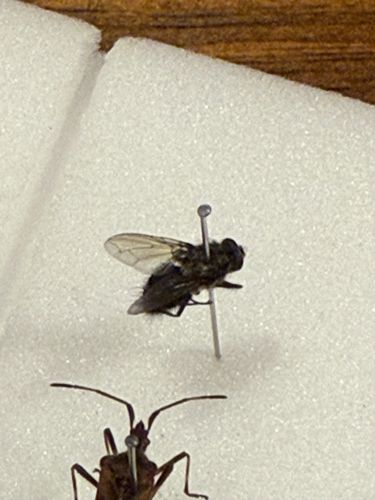Blow Fly
Scientific Name: Calliphoridae (various genera)
Order & Family: Diptera, Calliphoridae
Size: 4 mm to 16 mm (0.16 to 0.63 inches)

Natural Habitat
Widely distributed globally, found almost everywhere humans live, especially near decaying organic matter such as carrion, garbage, and feces. Also found in rural and urban environments.
Diet & Feeding
Adult blow flies feed on nectar, decaying organic matter, and various sugary substances. Their larvae (maggots) are scavengers and feed primarily on carrion (dead animals) or decaying plant material. Some species are parasitic.
Behavior Patterns
Blow flies are known for their rapid colonization of carrion. Females lay eggs on decaying flesh, and the maggots feed and develop quickly. They are strong fliers and are attracted to odors from decomposition, making them important in forensic entomology. They are also active in warm weather and exhibit a 'buzzing' flight.
Risks & Benefits
Risks include being vectors for disease transmission (e.g., bacteria like E. coli and Salmonella) due to their feeding habits on decaying matter and subsequent contact with human food surfaces. Some species can cause myiasis (infestation of living animal tissue). Benefits include their crucial role as decomposers, helping to break down carrion and waste. They are also important in forensic entomology for estimating time of death in criminal investigations.
Identified on: 10/12/2025